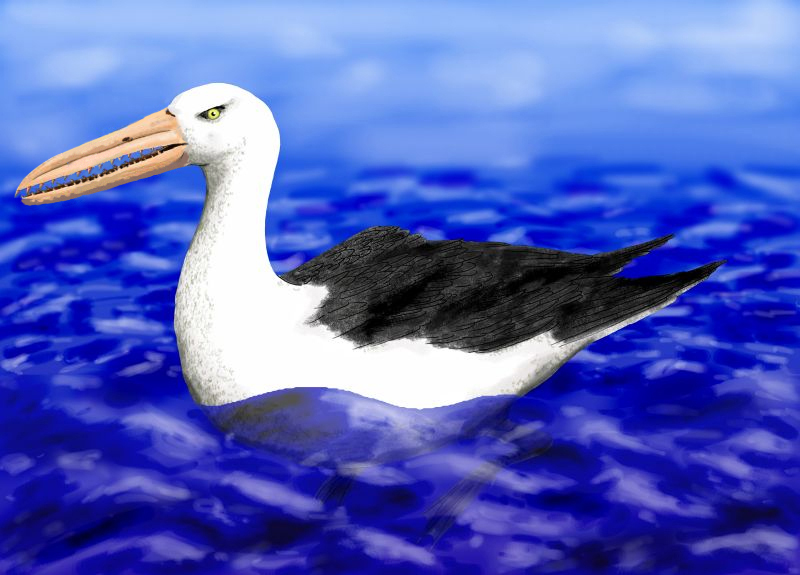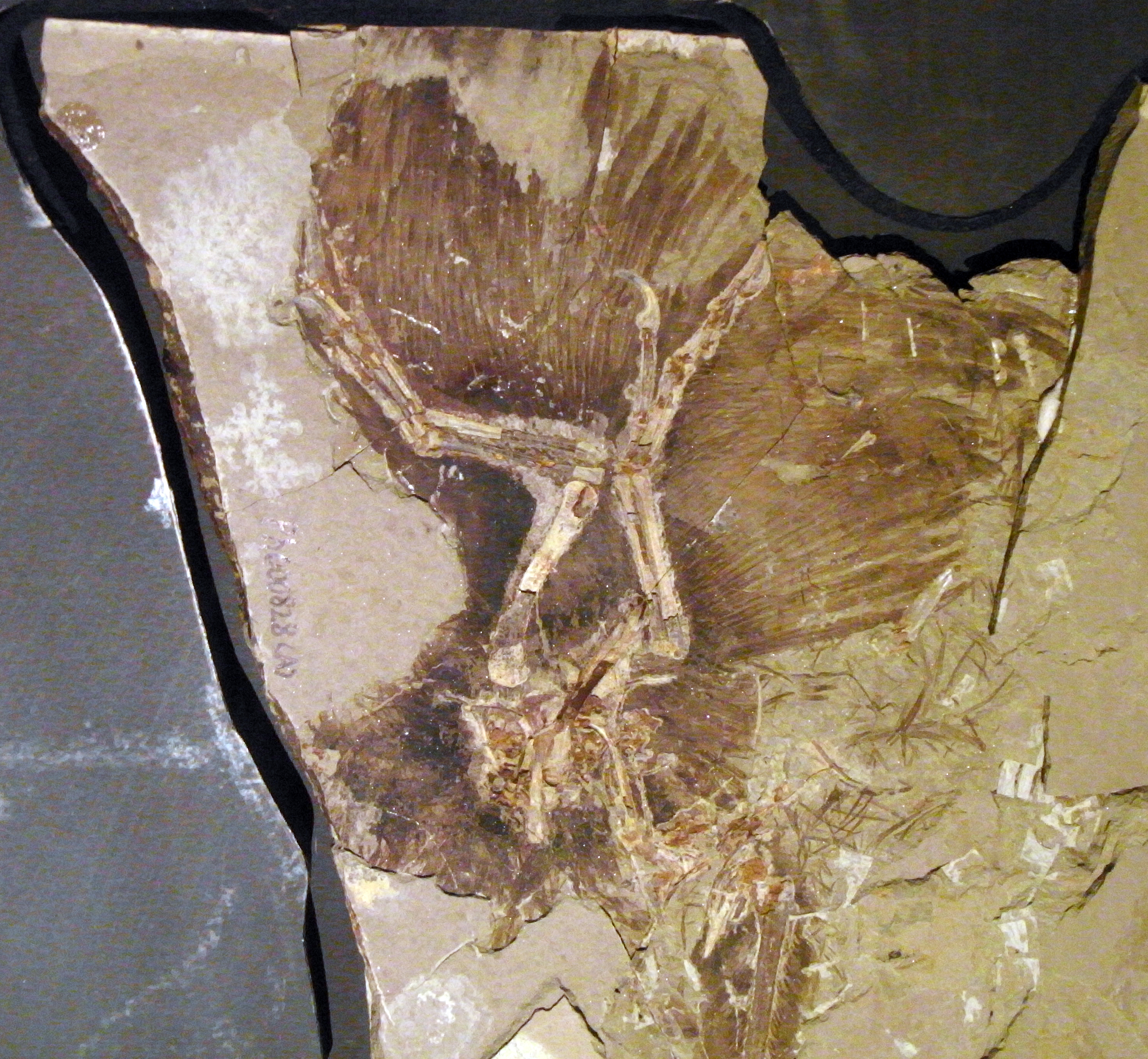|
Vegavis
''Vegavis'' is a genus of extinct bird that lived in Antarctica during the Maastrichtian stage of the Late Cretaceous. The type and only species is ''Vegavis iaai'', representing one of the earliest known crown group birds. Initially described as member of Anseriformes within Galloanserae, the definitive taxonomic position of ''Vegavis'' was debated among paleontologists over two decades until the 2025 description of a nearly complete skull, discovered in 2011, supported its original classification. Taxonomy The genus name, ''Vegavis'', is a combination of the name of Vega Island and "avis", the Latin word for bird, while the species name, "iaai", is after the acronym for Instituto Antartico Argentino (IAA), the Argentine scientific expedition to Antarctica. The holotype is held by the Museo de La Plata, Argentina. The specimen, cataloged as MLP 93-I-3-1, was found in 1993 from the López de Bertodano Formation at Cape Lamb on Vega Island, Antarctica, and was first though ... [...More Info...] [...Related Items...] OR: [Wikipedia] [Google] [Baidu] |
López De Bertodano Formation
The Lopez de Bertodano Formation is a geological Formation (geology), formation in the James Ross Island, James Ross archipelago of the Antarctic Peninsula. The strata date from the end of the Late Cretaceous (upper-lower Maastrichtian stage) to the Danian stage of the lower Paleocene, from about 70 to 65.5 million years ago, straddling the Cretaceous-Paleogene boundary. Cretaceous-Paleogene boundary The Cretaceous–Paleogene boundary (K–Pg) crops out on Seymour Island in the upper levels of the Lopez de Bertodano Formation. A small (but significant) iridium anomaly occurs at the boundary on Seymour Island, as at lower latitudes, thought to be fallout from the Chicxulub impactor in the Gulf of Mexico. Directly above the boundary a layer of disarticulated fish fossils occurs, victims of a disturbed ecosystem immediately following the impact event. Multiple reports have described evidence for climatic changes in Antarctica prior to the mass extinction, but the extent to which t ... [...More Info...] [...Related Items...] OR: [Wikipedia] [Google] [Baidu] |
Anseriformes
Anseriformes is an order (biology), order of birds also known as waterfowl that comprises about 180 living species of birds in three families: Anhimidae (three species of screamers), Anseranatidae (the magpie goose), and Anatidae, the largest family, which includes over 170 species of waterfowl, among them the ducks, goose, geese, and swans. Most modern species in the order are highly adapted for an aquatic existence at the water surface. With the exception of screamers, males have Penis#Birds, penises, a trait that has been lost in the Neoaves, the clade consisting of all other modern birds except the galliformes and paleognaths. Due to their aquatic nature, most species are web-footed. Evolution Anseriformes are one of only two types of modern bird to be confirmed present during the Mesozoic alongside the other dinosaurs, and in fact were among the very few birds to survive their extinction, along with their cousins, the Galliformes. These two groups only occupied two ecologic ... [...More Info...] [...Related Items...] OR: [Wikipedia] [Google] [Baidu] |
Bird
Birds are a group of warm-blooded vertebrates constituting the class (biology), class Aves (), characterised by feathers, toothless beaked jaws, the Oviparity, laying of Eggshell, hard-shelled eggs, a high Metabolism, metabolic rate, a four-chambered heart, and a strong yet lightweight Bird skeleton, skeleton. Birds live worldwide and range in size from the bee hummingbird to the common ostrich. There are over 11,000 living species and they are split into 44 Order (biology), orders. More than half are passerine or "perching" birds. Birds have Bird wing, wings whose development varies according to species; the only known groups without wings are the extinct moa and elephant birds. Wings, which are modified forelimbs, gave birds the ability to fly, although further evolution has led to the Flightless bird, loss of flight in some birds, including ratites, penguins, and diverse endemism, endemic island species. The digestive and respiratory systems of birds are also uniquely a ... [...More Info...] [...Related Items...] OR: [Wikipedia] [Google] [Baidu] |
Syrinx (bird Anatomy)
The syrinx () is the vocal organ of birds. Located at the base of a bird's vertebrate trachea, trachea, it produces sounds without the vocal cords, vocal folds of mammals. The sound is produced by vibrations of some or all of the ''membrana tympaniformis'' (the walls of the syrinx) and the ''pessulus'', caused by air flowing through the syrinx. This sets up a self-oscillating system that modulates the airflow creating the sound. The muscles modulate the sound shape by changing the tension of the membranes and the bronchial openings. The syrinx enables some species of birds (such as parrots, crows, and mynas) to mimic human speech. Unlike the larynx in mammals, the syrinx is located where the trachea forks into the lungs. Thus, Lateralization of bird song, lateralization is possible, with muscles on the left and right branch modulating vibrations independently so that some songbirds can produce more than one sound at a time. Some species of birds, such as New World vultures, la ... [...More Info...] [...Related Items...] OR: [Wikipedia] [Google] [Baidu] |
Late Cretaceous
The Late Cretaceous (100.5–66 Ma) is the more recent of two epochs into which the Cretaceous Period is divided in the geologic time scale. Rock strata from this epoch form the Upper Cretaceous Series. The Cretaceous is named after ''creta'', the Latin word for the white limestone known as chalk. The chalk of northern France and the white cliffs of south-eastern England date from the Cretaceous Period. Climate During the Late Cretaceous, the climate was warmer than present, although throughout the period a cooling trend is evident. The tropics became restricted to equatorial regions and northern latitudes experienced markedly more seasonal climatic conditions. Geography Due to plate tectonics, the Americas were gradually moving westward, causing the Atlantic Ocean to expand. The Western Interior Seaway divided North America into eastern and western halves; Appalachia and Laramidia. India maintained a northward course towards Asia. In the Southern Hemisphere, Aus ... [...More Info...] [...Related Items...] OR: [Wikipedia] [Google] [Baidu] |
Neornithes
Birds are a group of warm-blooded vertebrates constituting the class Aves (), characterised by feathers, toothless beaked jaws, the laying of hard-shelled eggs, a high metabolic rate, a four-chambered heart, and a strong yet lightweight skeleton. Birds live worldwide and range in size from the bee hummingbird to the common ostrich. There are over 11,000 living species and they are split into 44 orders. More than half are passerine or "perching" birds. Birds have wings whose development varies according to species; the only known groups without wings are the extinct moa and elephant birds. Wings, which are modified forelimbs, gave birds the ability to fly, although further evolution has led to the loss of flight in some birds, including ratites, penguins, and diverse endemic island species. The digestive and respiratory systems of birds are also uniquely adapted for flight. Some bird species of aquatic environments, particularly seabirds and some waterbirds, have f ... [...More Info...] [...Related Items...] OR: [Wikipedia] [Google] [Baidu] |
Ornithurae
Ornithurae (meaning "bird tails" in Greek) is a natural group that includes modern birds and their very close relatives such as the ichthyornithines and the hesperornithines. This clade is defined in the ''PhyloCode'' by Juan Benito and colleagues in 2022 as "the smallest clade containing '' Ichthyornis dispar'', '' Hesperornis regalis'', and '' Vultur gryphus''". Classification Ernst Haeckel coined the name in 1866 and included in the group all "true birds" with the "characteristic tail morphology of all extant birds" (translation by Jacques Gauthier). This distinguishes the group from ''Archaeopteryx'', which Haeckel placed in another new group called Sauriurae. Said simply, modern birds have short, fused pygostyle tails, while ''Archaeopteryx'' retained the long tail characteristic of non-avian theropod dinosaurs.Haeckel, Ernst (1866). ''Generelle Morphologie der Organismen''. Berlin: Georg Reimer. Gauthier converted Ornithurae into a clade, giving it a branch-based defi ... [...More Info...] [...Related Items...] OR: [Wikipedia] [Google] [Baidu] |
Aves
Birds are a group of warm-blooded vertebrates constituting the class Aves (), characterised by feathers, toothless beaked jaws, the laying of hard-shelled eggs, a high metabolic rate, a four-chambered heart, and a strong yet lightweight skeleton. Birds live worldwide and range in size from the bee hummingbird to the common ostrich. There are over 11,000 living species and they are split into 44 orders. More than half are passerine or "perching" birds. Birds have wings whose development varies according to species; the only known groups without wings are the extinct moa and elephant birds. Wings, which are modified forelimbs, gave birds the ability to fly, although further evolution has led to the loss of flight in some birds, including ratites, penguins, and diverse endemic island species. The digestive and respiratory systems of birds are also uniquely adapted for flight. Some bird species of aquatic environments, particularly seabirds and some waterbirds, have ... [...More Info...] [...Related Items...] OR: [Wikipedia] [Google] [Baidu] |
Neognathae
Neognathae (; ) is an infraclass of birds, called neognaths, within the class Aves of the clade Archosauria. Neognathae includes the majority of living birds; the exceptions being the tinamous and the flightless ratites, which belong instead to the sister taxon Palaeognathae. There are nearly 10,000 living species of neognaths. The earliest fossils are known from the very end of the Cretaceous with the oldest known members being ''Teviornis'' and ''Vegavis'', but molecular clocks suggest that neognaths originated sometime in the first half of the Late Cretaceous, about 90 million years ago. Since then, they have undergone adaptive radiation, producing the diversity of form, function, and behavior that exists today. Neognathae includes the order (biology), order Passeriformes (perching birds), one of the largest orders of land vertebrates, containing some 60% of living birds. Passeriformes is twice as species-rich as Rodentia and about five times as species-rich as bat, Chiroptera ... [...More Info...] [...Related Items...] OR: [Wikipedia] [Google] [Baidu] |
Cape Lamb
Vega Island () is an island in Antarctica, long and wide, which is the northernmost of the James Ross Island group and lies in the west part of Erebus and Terror Gulf. It is separated from James Ross Island by Herbert Sound and from Trinity Peninsula by Prince Gustav Channel. Location Vega Island is in Graham Land, to the southeast of the Trinity Peninsula, which is the tip of the Antarctic Peninsula. Erebus and Terror Gulf is to the east. James Ross Island is to the south, and the Ulu Peninsula of James Ross Island is to the west, separated from Vega Island by the Herbert Sound. The Prince Gustav Channel separates it from Corry Island and Eagle Island to the north. Cape Gordon is at the east end of the island. Sailing directions The US Defense Mapping Agency's ''Sailing Directions for Antarctica'' (1976) describes Vega Island as follows: Name Vega Island was named by Dr. Otto Nordenskjöld, leader of the Swedish Antarctic Expedition (SwedAE; 1901–04), apparent ... [...More Info...] [...Related Items...] OR: [Wikipedia] [Google] [Baidu] |










